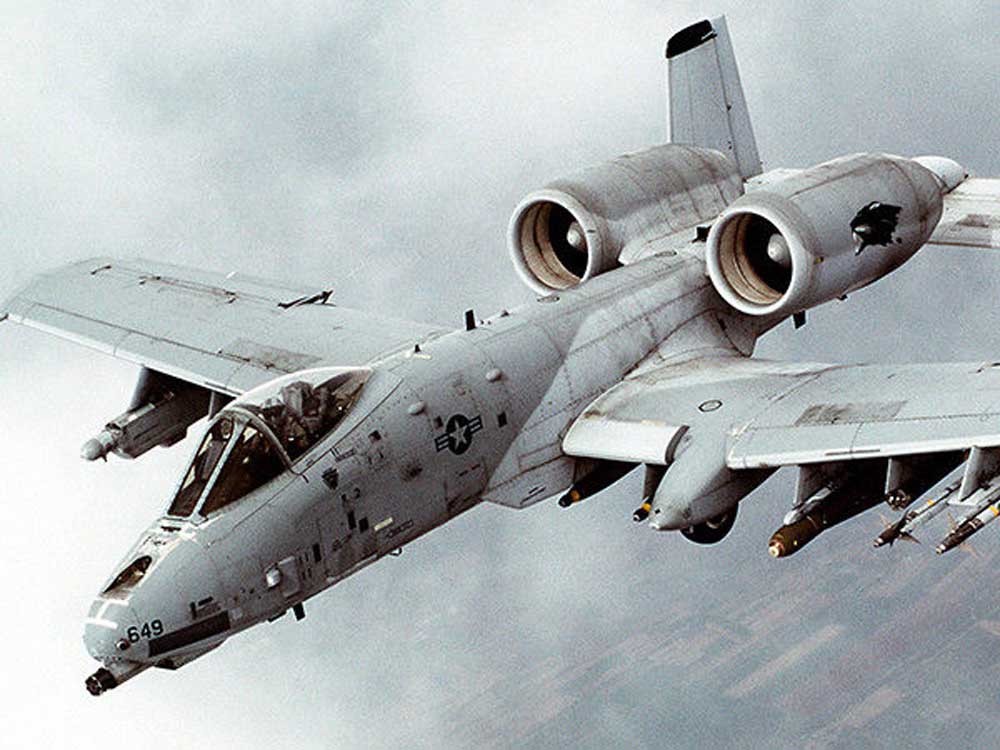Congress must act to save the Warthog
Published 11:00 pm Sunday, April 10, 2016

- An A-10 Thunderbolt II from the 81st Fighter Squadron, Spangdahlem Air Base, Germany, pulls away from a tanker (not shown) after refueling on the way to Serbian targets during Operation ALLIED FORCE. (By SRA Greg L. Davis, USAF - defenseimagery.mil, Public Domain, https://commons.wikimedia.org/w/index.php?curid=5889015)
There’s nothing wrong with exploring your options. And that’s what the Air Force intends to do. But it’s important to recognize the value and the versatility of that ugliest of aircraft, the A-10 Thunderbolt II (the Warthog). It was prematurely scheduled for retirement, then given a reprieve last year. Now, it seems, the Air Force is looking for a suitable replacement.
“A top U.S. general says the Air Force is reviewing the future of its close air-support aircraft, a role currently filled by the A-10 Warthog, which first flew in 1975,” CNN reported.
Trending
Lt. Gen. Mike Holmes told the network, “My requirements guys are in the process of building a draft-requirements document for a follow-on (close air-support) airplane.”
Here’s what the Air Force needs to keep in mind. The A-10 is unsurpassed in doing its job – supporting ground troops and armor, and hitting small pockets of the enemy with devastatingly precise attacks.
A recent document from the House Armed Services Committee argued the A-10 is invaluable, evidenced even more so by its recent deployment against the Islamic State in Iraq and Syria as part of Operation Inherent Resolve.
As that document stated, “Rigorous oversight, endorsements from soldiers and Marines about the protection only the A-10 can provide, and repeated deployments in support of OIR have persuaded many members from both parties that the budget-driven decision to retire the A-10 is misguided.”
The Air Force’s bean counters had said the A-10 is too expensive to operate, and that it could be replaced by fighter jets such as the F-16, F-15E, and, eventually, Lockheed Martin’s new F-35 fighter.
But as the Bloomberg news service pointed out last year, “The A-10, originally intended to destroy Soviet tanks, is better suited to close-in missions than fighters designed for air-to-air combat. A titanium bathtub that wraps around the bottom of its cockpit gives the Warthog better protection against ground fire. It can fly as slowly as 300 knots (345 mph) without risk of stalling, compared with 450 knots for an F-16 or F-35.”
Trending
The Pentagon is slowly acknowledging that.
As U.S. Rep. Martha McSally, R-Ariz., said in January, “It appears the administration is finally coming to its senses and recognizing the importance of A-10s to our troops’ lives and national security.”
Rep. McSally, for the record, is a retired Air Force colonel and the first American woman to fly in combat. She’s flown the A-10.
Now it seems the Pentagon is examining its options.
“Holmes said that one possible replacement for the A-10 could be a type of already-existing turbo-propeller aircraft. Examples of this category of aircraft include the A-29 Super Tucano and AT-6 Wolverine,” CNN noted. “The U.S provided four A-29s to the new Afghan air force in January to help fight the Taliban.”
That’s not a bad option; turbo prop planes can move slowly and fire with precision. They’re also cheaper to operate than fighter jets.
The important thing is to keep the A-10 flying until something better is ready to deploy. Congress must protect the A-10.






